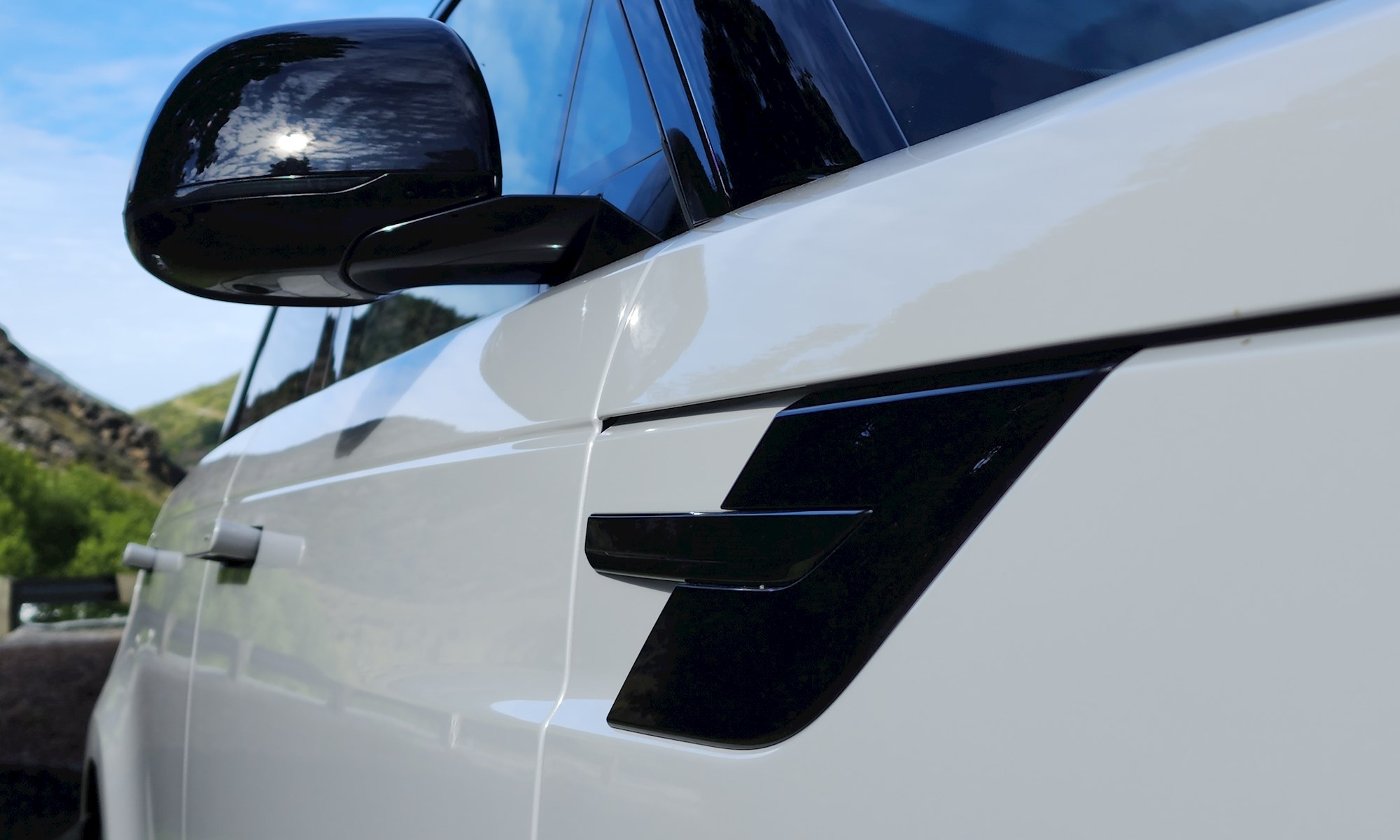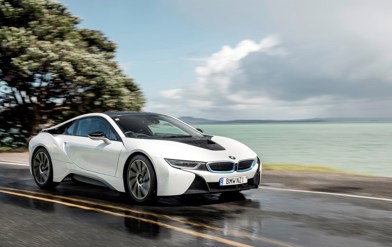This is a big one for the Range Rover brand in New Zealand; by which we mean it's a slightly smaller one.
We drove the new full-size Range Rover super-luxury SUV (confusingly still just called "Range Rover") in the the US earlier this year; that's now on sale here in NZ. But take the platform, powertrains and technology of that model and condense it down into a slightly smaller package, with a lot more focus on driver appeal, and you have the Range Rover Sport.

That's been a successful formula for Land Rover since the second generation Sport in 2013; the first, in 2004, was a bit of a Frankenstein's Monster, based on the chassis of the Discovery. Well-received, but pretty raw in places. The modern Sport is still purposeful, but undeniably posh and polished with it.
So here it is, on local soil (or right in it on some places of our introductory drive route in Central Otago). The lineup is as comprehensive - and maybe a bit confusing - as ever. Diesel continues to be a core powertrain, with a choice of two: D300 and D350, same basic engine but in two different power outputs. The more powerful D350 is the one we've driven and the one you see here: 258kW (350ps, hence the name) and 700Nm. No sign of the mild hybrid technology used in European-market Sport diesels, but apparently it's coming.
There's also still a petrol V8, but not the old supercharged 5.0-litre. Like the larger Rangie, the new Sport has moved to a BMW-sourced 4.4-litre twin-turbo, which is available exclusively in the flagship P530 First Edition for the first year of production. Fear not... after that it will be available elsewhere in the range. Note that this 390kW/750kW machine isn't a replacement for the much-loved Sport SVR; we don't know much about the next generation of that yet, but there will surely be one. SV is a big thing for Land Rover.

The other big news is that Sport has gone into electric technology in a much bigger way. There are now two plug-in hybrid electric vehicle (PHEV) variants, with much bigger engines and much bigger range than the previous model; with even more electricity to come. But we'll get back to that in a minute.
For now, we've delved into the D350 on some sunny Saturday morning Central Otago roads, and then slightly off them. It's clear Land Rover has managed to raise the Sport's game in a couple of potentially contradictory areas: handling and refinement.
There's no doubt it's still a big SUV - 2.4 tonnes for our D350 - but the substance and response of the steering is impressive and the chassis tracks beautifully through open-road corners, while still communicating plenty about changes in the surface beneath.

Yet it's so, so quiet. You'd be hard pressed to pick the D350 as a diesel at cruising speed, and when you really put your foot down it's more muted growl than compression-ignition clatter.
Some of that silence comes courtesy of clever tech: the latest version of Active Noise Cancellation, first seen in the Jaguar F-Pace, which uses microphones in the wheelarches to identify road and tyre noise and digital processors to produce an opposite-phase sound to cancel it out.
Some of the credit to the combination of agile handling with supple ride goes to the Adaptive Dynamics 2 (pause for breath) Active Twin Valve Dampers in the (another breath) Dynamic Air Suspension, which monitors vehicle response to the road surface 500 times per second.

The D350 picks up some handy features lacking in the D300, including Adaptive Off Road Cruise Control that does exactly what it says in the name: modulates speed and chassis response (working in tandem with Terrain Response 2) over rough terrain so you can just concentrate on the steering.
But some of the newest tech, we haven't had a chance to sample yet. There's a package called the Stormer Handling Pack (yes, really) which includes Dynamic Response Pro (a 48 volt-powered active anti-roll system), all-wheel steering, torque vectoring by braking and an electronic active differential.
All of the above is fitted as standard to the flagship P530 V8 and P510e PHEV; the latter seems especially interesting, with 375kW/700Nm (snapping at the heels of the petrol V8) and a massive plug-in battery that gives a claimed 113km of electric range. It's very much a performance/luxury PHEV; there's also a P440e with less power (324kW/620Nm) and sans the Stormer stuff, but the same EV range and DC fast-charge capability.

The other thing to talk about is styling; at least, Land Rover loves to talk about it. The company is a big fan of saying it's "reductive", which really just means nice and clean and with minimal adornment. And in fact the Sport does look sensational on the road, surreal even from some angles; much more so than in pictures. The elegantly minimalist ethos on the inside, although the Sport also seems to strike a great balance between clean lines (especially with the new Pivi Pro OS and curved glass infotainment screen) and a sensible about of physical switchgear.
Also reduced is the number of seats. You can no longer have third-row seating; the Sport is now more focused on, well, sportiness, while the full-size Range Rover has picked up a seven-seat option for the first time.
RANGE ROVER SPORT
ENGINES: 3.0-litre turbo diesel six, 3.0-litre petrol six with plug-in hybrid system, 4.4-litre twin-turbo petrol V8
POWER: 184kW/600Nm or 258kW/700Nm (diesels), 324kW/620Nm or 375kW/700Nm (PHEVs), 390kW/750Nm (V8)
GEARBOX: 8-speed automatic with AWD and low range transfer
0-100KM/H: 6.6-4.5sec
CONSUMPTION: 1.6-11.2l/100km, CO2 42-307g/km (WLTP)
PRICES: $179,900-$259,900
















